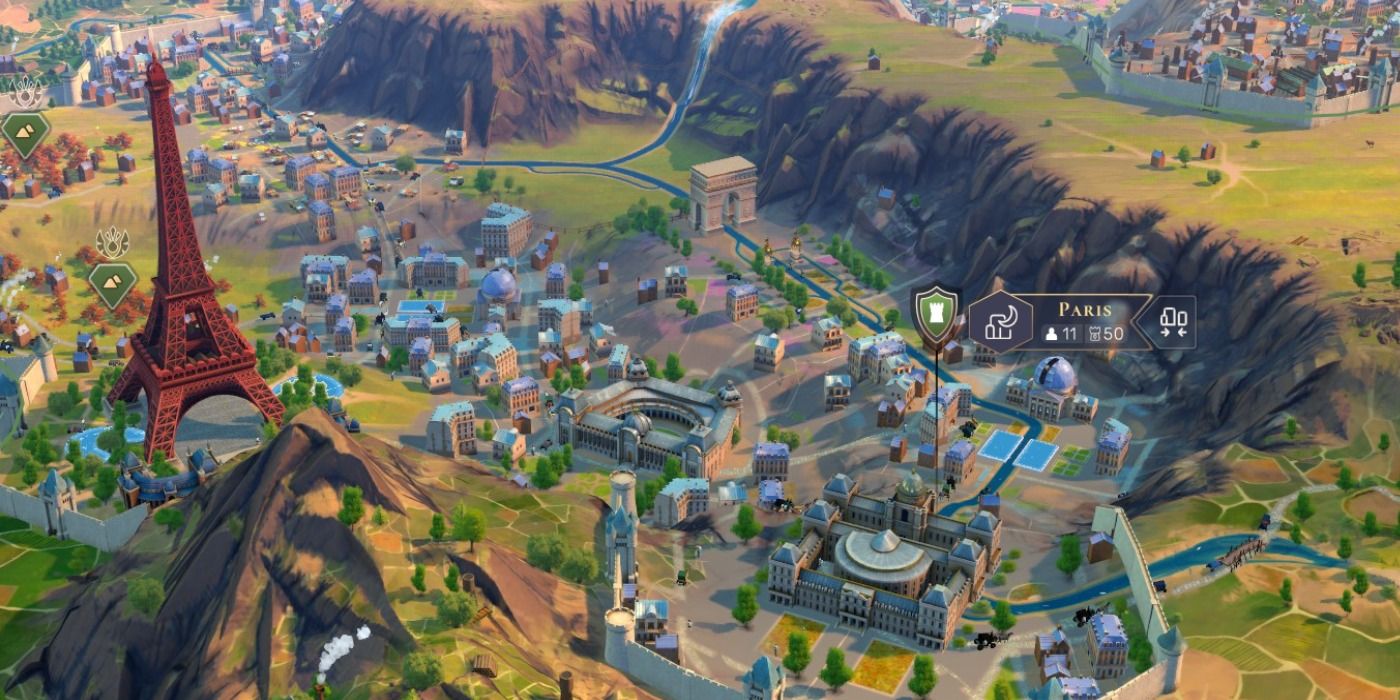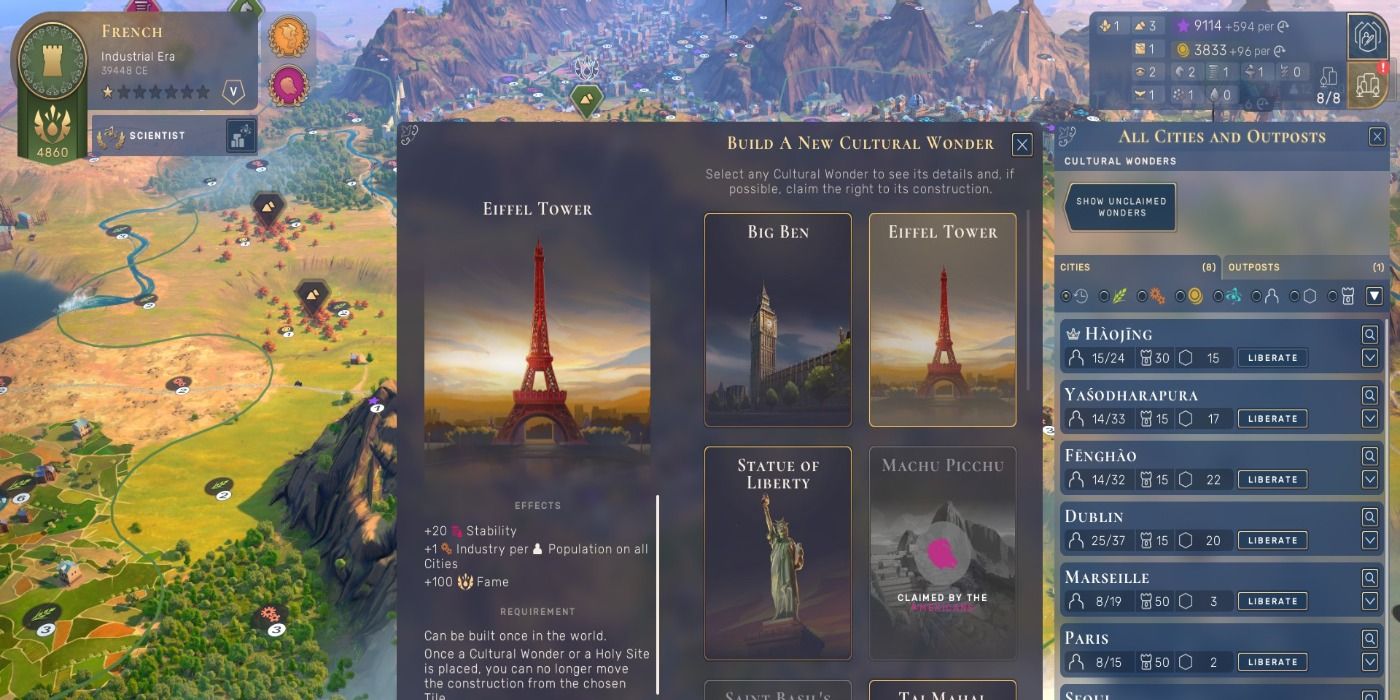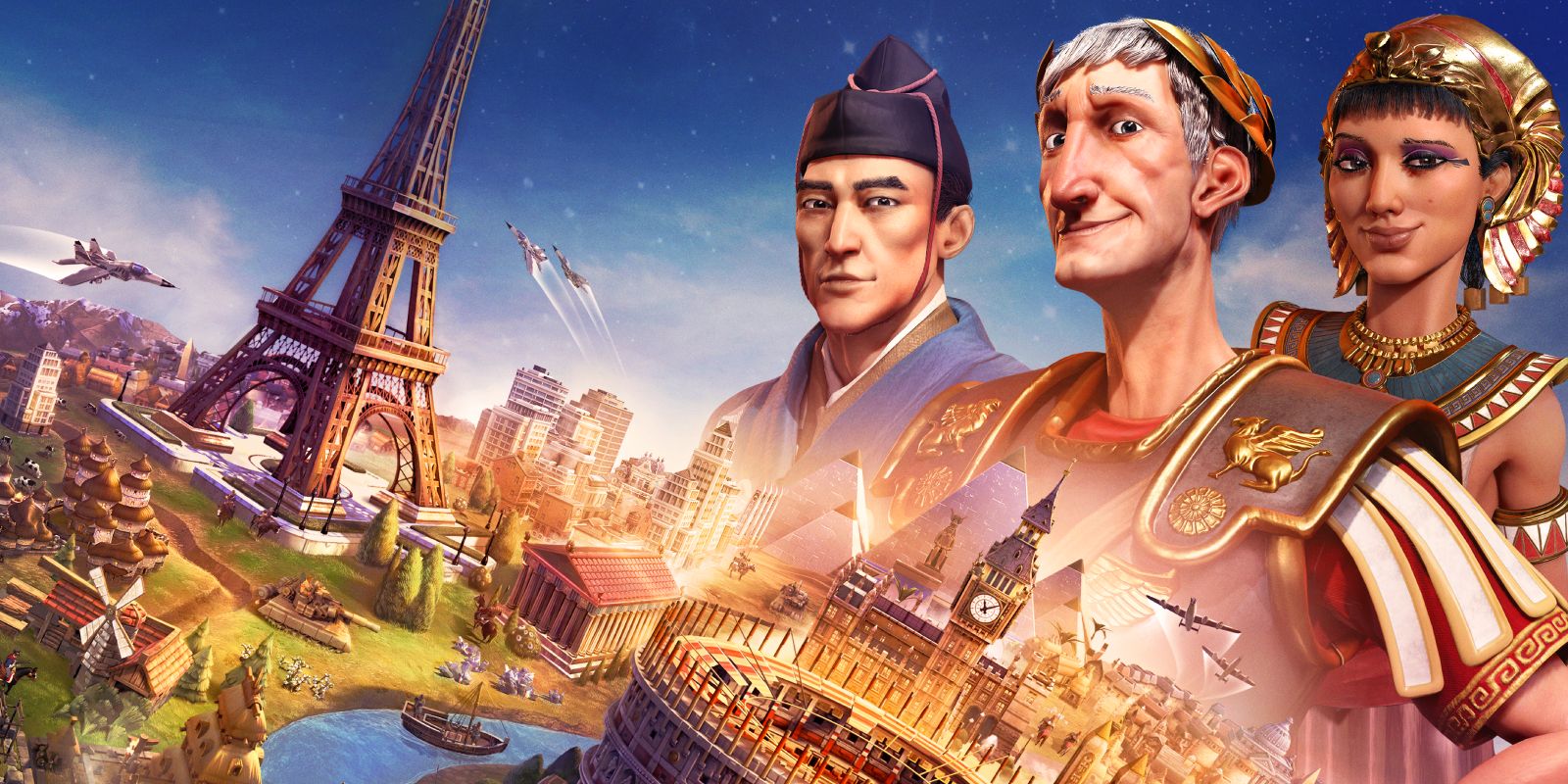In Humankind, players can construct famous world wonders throughout their empire that grant powerful bonuses. Cultural wonders are marvels of engineering, like the Statue of Zeus or the Empire State Building. Once built, they not only provide a lot of stability to keep their citizens happy, but also provide more fame for a culture, which is needed to win the game.
Every era, a new set of cultural wonders becomes available to build. However, players cannot build multiple wonders at once. They must first select one in the wonder menu, accessed from the cities and outposts button in the upper right corner, and claim it by spending a large amount of Influence. Once the exchange has been made, no other wonder can be claimed until the current one is built. This means that other cultures cannot compete for the same wonder, but it’s possible for the desired wonder to be claimed by a competitor.
Building a cultural wonder is rather flexible, as multiple cities in the empire can contribute industry at the same time, speeding up the process. Here’s a look at the best wonders available in each era of Humankind, what passive abilities they grant, and how to build them.
Humankind’s Strongest Cultural Wonders
Pyramid of Giza
To extend the reach of cities, players will build many districts during a single game of Humankind. These extensions provide bonus yields, like food and industry, and increase a city’s population limit, among other benefits. Districts will always be built throughout the game, so building a wonder that speeds up their construction is incredibly useful. Egypt's Great Pyramid of Giza lowers the production costs of all districts by 25%, saving cities turns that can be spent toward other endeavors like training army units for defense or war.
Mausoleum of Halicarnassus
After the Mausoleum of Halicarnassus is built, every city in the builder’s empire receives 1% science for every district it has. Because more districts will continually be created throughout the game, this means the science bonus will scale higher as the player progresses further into the tech tree.
Angkor Wat
To spread religion in Humankind, players need their culture to exert as much Faith as possible. There’s not much use for Faith as a resource outside religious gameplay, but those who manage to build Angkor Wat will receive food equivalent to the amount of faith they have. This ensures that diverting time to building Holy Sites helps more than just a religion; it will also help grow the population.
Machu Picchu
Machu Picchu is an interesting wonder, as it relies on the strength of the capital city to be most effective. When built, it sends food to every other city in the empire equal to 50% of the capital’s food output. Players who turned their capital city into a food-producing breadbasket should consider building this wonder to help their other cities thrive.
Eiffel Tower
This wonder is a great asset to cultures with high populations. The Eiffel Tower grants cities +1 industry for every population they have, turning highly populated cities into industrial powerhouses. Players wishing to churn out lots of soldiers for war will greatly benefit from this wonder’s bonus, but because of how necessary industry is for building, practically every playstyle can take advantage of it.
Christ the Redeemer
Lastly, Brazil’s Christ the Redeemer in the Contemporary Era acts as a Holy Site for religious purposes, but even cultures who didn’t invest in religion will find a use for it. It increases the food, industry, money, and science of every city by 10%, allowing every corner of the builder’s territory to perform slightly better in all areas.
Humankind is available for PC, Macintosh OS, and Stadia.



